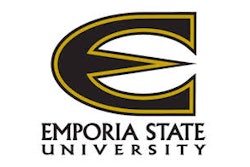As an exercise intended to help improve our health club business, we regularly ask ourselves this question: "What would a consultant say?"

As an exercise intended to help improve our health club business, we regularly ask ourselves this question: "What would a consultant say?" Then we imagine an industry consultant visiting with us for a few days and giving us a laundry list of the good, the bad and the ugly.
This isn't so hard for us to envision, since we occasionally work as consultants with other club owners. And just as we do when working to untangle other people's knotty problems, posing the question forces us to look at everything we do with fresh eyes and to be honest about what we see.
Most of the time, this exercise starts with an uncomfortable sensation of something gnawing at us. If you find yourself experiencing that same gnawing feeling, do yourself a favor and ask yourself the same question. We'll bet that if you can put into words what's causing that feeling in your gut, then you'll be well on your way to improving your business. You may still need help - a consultant, a trade show, articles penned by industry experts - to determine how to fix your problems, but at least you'll have a better sense of your reality.
We see it every time we meet with club owners or management teams. Last year, we met with members of a sales team who were incredibly frustrated by the number of low-priced family add-ons that they were being compelled to sell. It took us several minutes of questioning to get to the bottom of this issue. Why in the world was it a problem to be signing too many family members?
The problem was that the club had a standing offer to households with two members, giving incredibly inexpensive add-on memberships to others sharing the address - meaning, kids. What the club's owners never anticipated was Grandma and Grandpa coming along, too, as the recession forced more of the community's seniors to move in with their children. The club even had some older members cancel regular memberships and then rejoin at the lower rate once they relocated.
The stress and frustration on the faces of the sales team members were obvious, so we offered a simple solution: They needed to stop what they were doing. It wasn't working. Business conditions had changed, and what was once a fine and productive policy simply did not work anymore. That suggestion was easy. The harder part - how to do it and how to redefine a family membership - was more challenging. But, had they listened to the gnawing feeling in their own guts, they would have already known what to do.
During that visit, we were pleased to find out that the club had made a simple change we had previously suggested. One of the club's problems had been some non-members getting free pool time by always coming for open swim with a spouse or friend who was a member. We asked, "How many times a week is open swim offered?" Three days a week, we were told. Was it a wild success every time, with lots of kids and families? No, it was only really popular during one time slot - on weekends when the kids were out of school. Our suggestion was simple: Stop offering so many open swim times.
Seems obvious, right? Maybe to you, and to us, now. But in our experience, every health club has things it does because it has always done them that way, and while it may seem obvious from the outside that something needs to change, it's not always obvious from the inside. And even if it is, the nature of the change could be more than an owner or manager is willing to take on.
A new club owner we spoke with one year at the Athletic Business Conference was desperate to take the reins of her club, but she felt at the mercy of the club's longtime sales manager. This sales manager's philosophy was old school. She never gave prices over the phone, and she wanted to consistently offer discounts and deals to drive high-pressure sales. The problem was that the club was failing. The new owner needed to alter completely the sales methodology and culture of the business, but she was frozen into inaction. She was afraid of firing her sales manager and taking the other necessary steps to change the business, even though the most likely outcome of doing nothing would be failure.
In our business, we get that gnawing feeling about something about every six to 12 months. Last year, it was the poor performance of our staff. We started to feel a little sick in May. We watched more closely in June, and started taking corrective action in July. By September, the positive impact on our business was dramatic and gratifying. We also came out of it with our "19 Rules" [Oct. 2011, p. 67].
This year, the sick feeling in our stomachs was a problem of our own making. We always used to allow our trainers to perform multiple roles, even while they were supposed to be working their regular shift on the workout floor. Since most of our trainers do personal training and teach group fitness classes, this was convenient for them and, to a large degree, valuable for us. We know that our best employees are deeply enmeshed in our business and connected to our members. So, when we have an employee who works the floor, does personal training and teaches classes, we've got a well-integrated employee - and, until recently, it was no problem if they wore all three of these hats in rapid succession during one work shift.
The problem was that it got out of hand, and for a good reason. We're busier than we've ever been, and we have more classes and more personal training activity than ever. That's great for our employees and our business, but we saw aspects of our operation suffering. We put trainers on the workout floor for a reason. They do fitness evaluations and introductory workouts with new members. They interact with our other members and help maintain a safe workout environment. They clean. But as we allowed our trainers to simply swap their floor hours for more lucrative personal training and group fitness hours, we started neglecting our bread and butter, which is taking care of our members. We also put ourselves in the uncomfortable position of being financial backstops for our employees, because when they didn't book personal training clients, they still had their regularly scheduled floor hours to fall back on. We didn't know when we could count on them doing what we needed them to do, but they knew they'd be paid regardless of whether they had clients or classes.
It wasn't difficult to determine what was bothering us once we started paying attention to our stomachs, and we've begun exploring ways to fix this. We're well aware that one of the biggest obstacles we have to overcome is the cultural issue of how we've always done things, and we also know that fixing this will cause a ripple effect into other aspects of our business. Maybe we'll ultimately need an outside consultant to help us with how to properly fix this, but at least we've done the initial work ourselves.
So, what would a consultant say? What we're doing isn't working. Fix it.




































